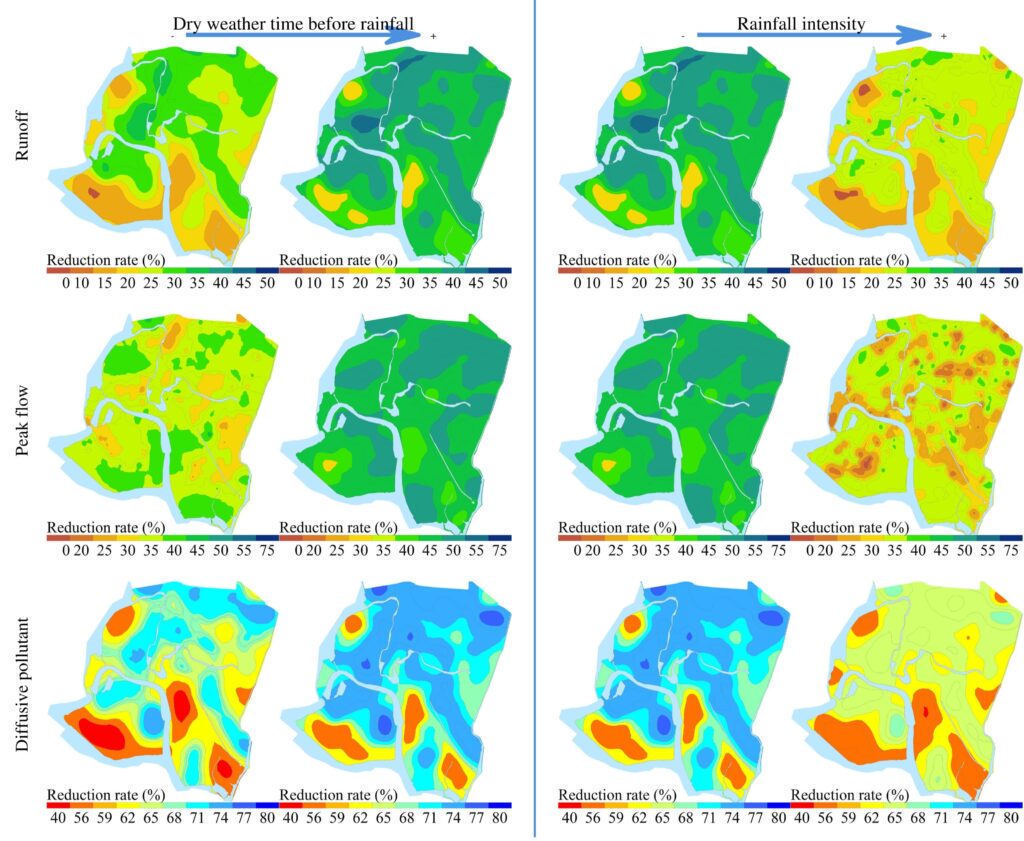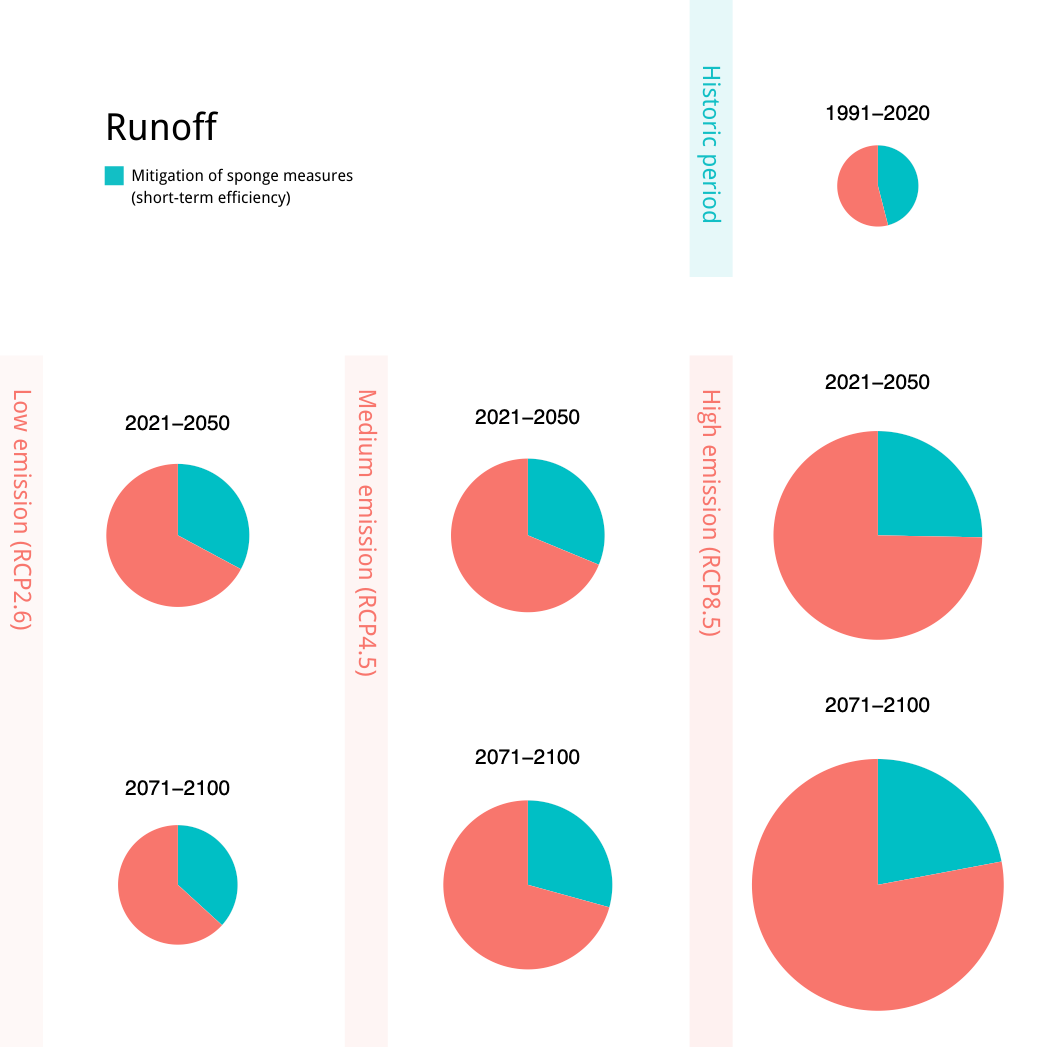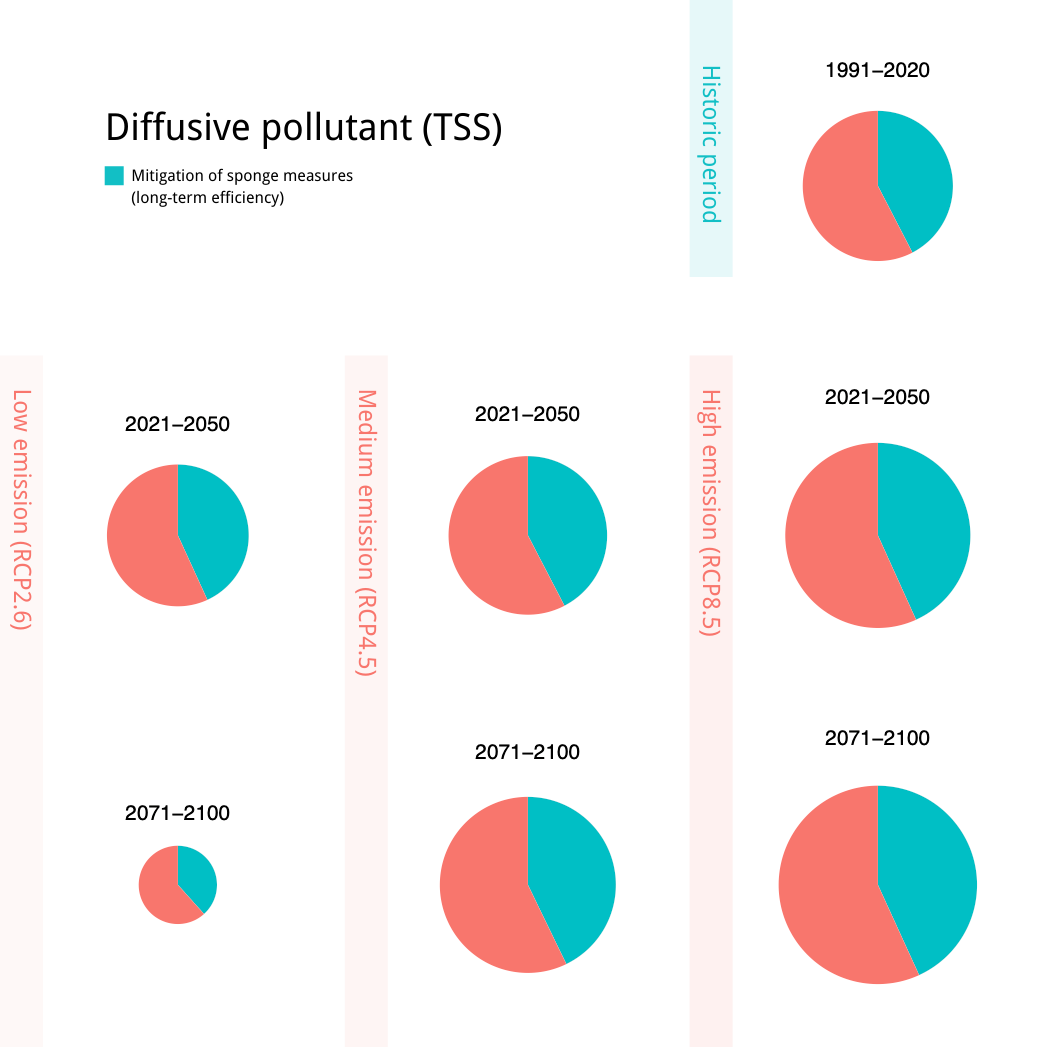Performance of Sponge City Measures Under Different Climate Patterns
As a new generation concept of urban storm water management, high expectations are placed on Sponge City, in particular for its potential in controlling runoff and non-point source pollution in the urban context. By reducing runoff and retaining pollutants, Sponge City measures are expected to relieve the risks of urban flooding and improve the aquatic environment for cities in lack of efficient storm water management. Existing studies mostly focus on the efficiency of these measures under specific rainfalls. As global warming continues, many uncertainties are in existence about such efficiency under extreme rainfalls. Additionally, the accumulation of diffusive pollutants in cities often takes place during the dry weather period before rainfalls, and grows with the during of dry weather, which deserves attention for its potential impacts on the efficiency of sponge measures.
Sponge measures under current climate
Under the current climate, Yang et al (2021) analyzed the efficiency of sponge measures against different rainfall intensity, duration and dry weather time. Their result suggests that the sponge measures in the study area reduced 45-80% of storm water runoff, 39-60% of peak flow, and 30-82% of diffusive pollutants. With growing dry weather time before the rainfalls, the efficiency of sponge measures increases by 43.98-77.25%. However, with increased rainfall, such efficiency drops by 29.55-73.43%. Because of different land use patterns, the efficiency of sponge measures varies over space, and the difference becomes increasingly significant with more rainfall and shorter dry weather time before the rainfall.

Sponge measures under changing climate
Based on precipitation forecasts with global circulation models, Yang et al (2022) analyzed the efficiency of sponge measures under future climate scenarios, and attempted to quantify the impact from climate change. Under future scenarios of different carbon emission intensities (RCP 2.6, RCP4.5 and RCP8.5), precipitation is on a increasing trend as carbon emission grows. Their analysis shows that, sponge measures become less efficient in general under future climate. Their contribution to diffusive pollution control is more significant in a single precipitation event; in contrast, their efficiency in controlling runoff becomes more evident in the long run, and such efficiency stays relatively stable on a yearly basis even under climate change. Variations over space in their efficiency are still in existence, and are found correlated to carbon emission intensity and time.






*****
These studies show that the efficiency of sponge measures varies over time and space, and is influenced by duration of the hydrological cycle, dry-wet weather pattern, and future climate change. Therefore, storm water management policies, including those in the Sponge City program, need to be adaptive and take into consideration variations of efficiency under different weather and climate.
Full papers
- Yang, W., Zhang, J., Krebs, P., 2022. Low impact development practices mitigate urban flooding and non-point pollution under climate change. Journal of Cleaner Production 347, 131320. https://doi.org/10.1016/j.jclepro.2022.131320
- Yang, W., Zhang, J., Mei, S., Krebs, P., 2021. Impact of antecedent dry-weather period and rainfall magnitude on the performance of low impact development practices in urban flooding and non-point pollution mitigation. Journal of Cleaner Production 320, 128946. https://doi.org/10.1016/j.jclepro.2021.128946




